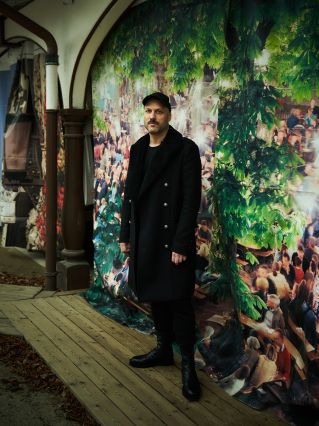Rollentausch bei Richard Strauss - Deutsche Oper Berlin
What moves me
Role reversal with Richard Strauss
The collaboration between Richard Strauss and Hugo von Hofmannsthal is a story of lifelong creative differences. ARABELLA was their last joint work. Director Tobias Kratzer on an opera of exquisite inner conflict
Some people dismiss ARABELLA as more of an operetta than an opera – and there is some truth in the claim: no lead-in to the story, two main acts separated by a ball that creates a huge upset – nothing that challenges convention. But if you look closely and listen carefully, you’ll detect a very strained internal tension. The letters that went between Richard Strauss and his librettist Hugo von Hofmannsthal are testimony to two professionals at odds with, and rarely complementing, one another. As is often the case with great duos, their collaborations were dogged by misunderstandings. Maybe it’s this dissonance that makes works like these endure.
On the one hand we have Hofmannsthal, an intellectual, an aesthete, a dreamer, who is ever curious about new ideas. On the other side we have Strauss, feet firmly on the ground, exploring orthodox themes, musically restrained after his outpourings in ELEKTRA and SALOME, almost mainstream. And then the death of Hofmannsthal in the middle of their work on ARABELLA – a tragedy that preserves this archetypal, societal tension between the two in the opera itself.
ARABELLA is the first part of a trilogy of works by Strauss, conceived by the Deutsche Oper Berlin but with me selecting the operas to be staged: ARABELLA, INTERMEZZO and THE WOMAN WITHOUT A SHADOW. It came to me in a flash of intuition that it would be good to present the works in reverse chronological order. ARABELLA is the best known and most accessible of the trio; INTERMEZZO, which is light and witty, makes the perfect intermezzo; and THE WOMAN WITHOUT A SHADOW is the opus summum of the three. All three operas explore different stages of matrimony and relationships. In ARABELLA a man and woman come together as a couple; INTERMEZZO is a tale of classic domestic strife; THE WOMAN WITHOUT A SHADOW is about an existential crisis touching on the metaphysical. But this common denominator is subordinate to the impression left by Strauss’s music, deep beneath the surface. And the first and third operas also shed light on the Strauss/Hofmannsthal dynamic.

The idea to write ARABELLA stemmed from Hofmannsthal. In an earlier draft he anticipated the plot - albeit focused not on Arabella but on a character who is relegated to a supporting role in the final version: Arabella’s sister Zdenka, who’s dressed mostly in men’s clothes. Hofmannsthal’s interest was tweaked by her gender duality; Arabella’s character, too, was initially sketched as more cynical, more acerbic, becoming mellower, softer and altogether more significant after Strauss joined the project. He cut out stretches of dialogue and underlaid her part with music that tended to the traditional. But then, with the project half-finished, Hofmannsthal died – and, out of respect and loyalty to his collaborator, Strauss barely changed a line. The result is a growing ambivalence on the part of Arabella. Strauss is seemingly his unadulterated self in Act 1, whilst two levels emerge in Act 3 with the internal clashing of lyrics and music becoming part and parcel of the work itself. We the audience are witness first to the superimposition of two strands of action, rooted in tradition and modernism respectively, and then to their abrupt divergence. Thus the action is initially set around 1860 before jumping to the 1920s, grazing the late 1960s and ending in the present day – which itself is a throwback to the ’20s in matters of diversity and ambivalent attitudes. Along the way we experience reverses of fortune and chapters of conservatism à la 1950s, until society opens up again.
All this onstage action takes place against an auditory backdrop of Straussian loveliness. The ARABELLA score is sometimes labelled conservative or even tame. But attentive listeners will pick out the composer’s self-directed irony, the way he over-indulges himself in secondary themes: it’s as if the music is poking fun at itself, its protagonists and their aspirations – musical postmodernism before the concept existed. We’ve taken Strauss’s bait if we read his flamboyant sentimentality straight as a nostalgic yearning for a bygone world. I put it to him affectionately that he’s always – knowingly - nudging and winking at us in self-deprecation, that he was clear-eyed about his conservatism and under no illusions about the changing times.





